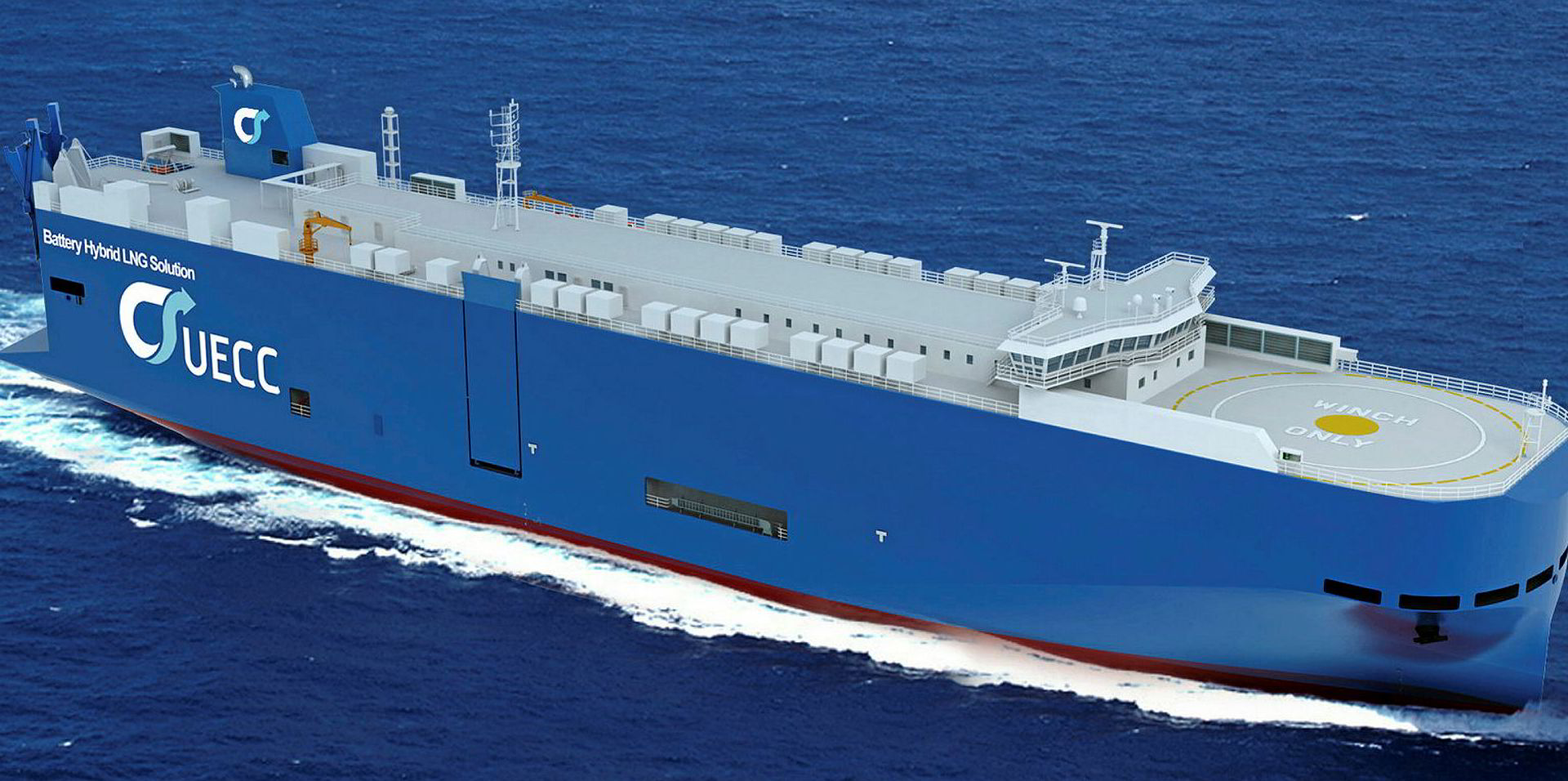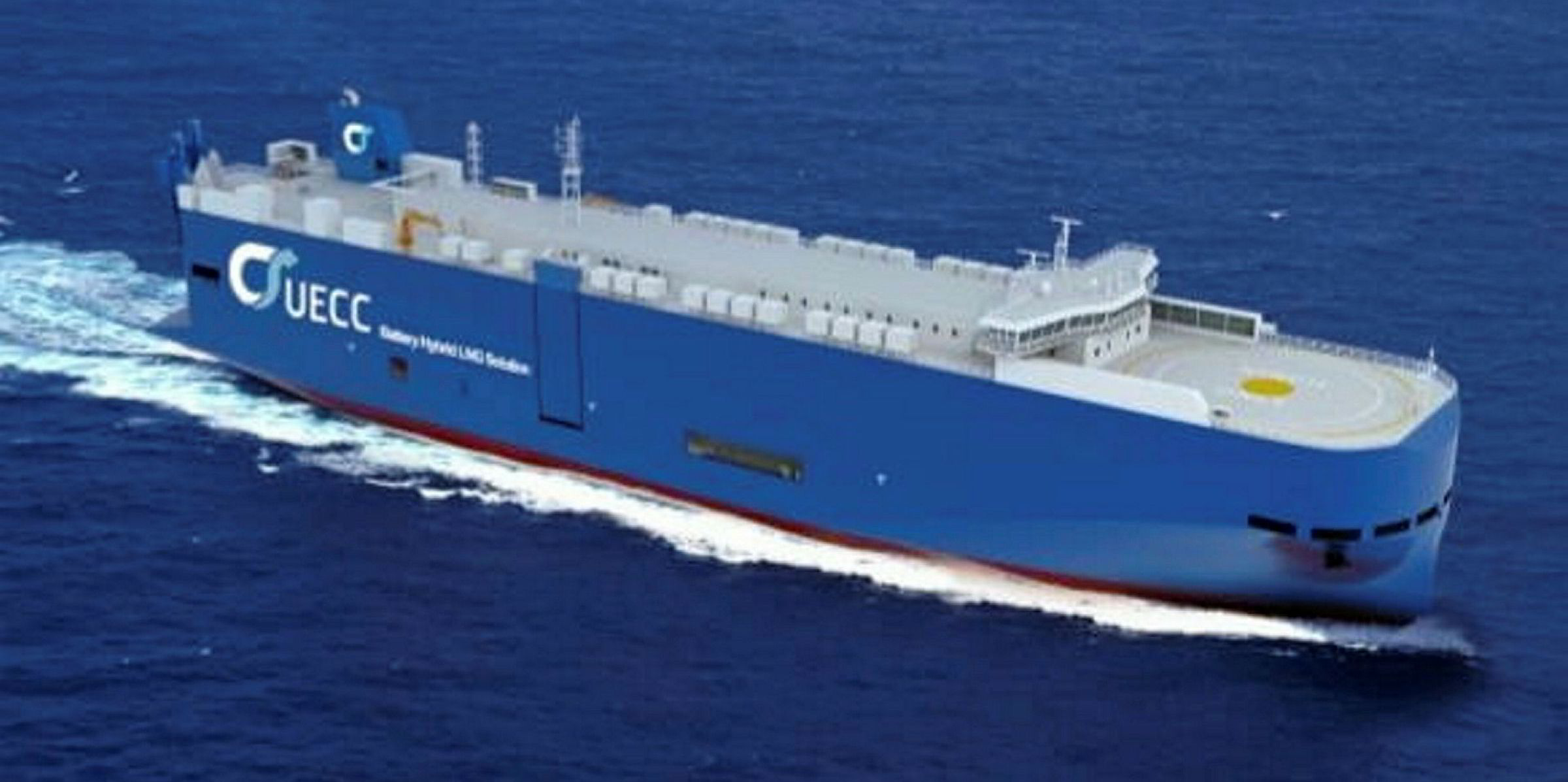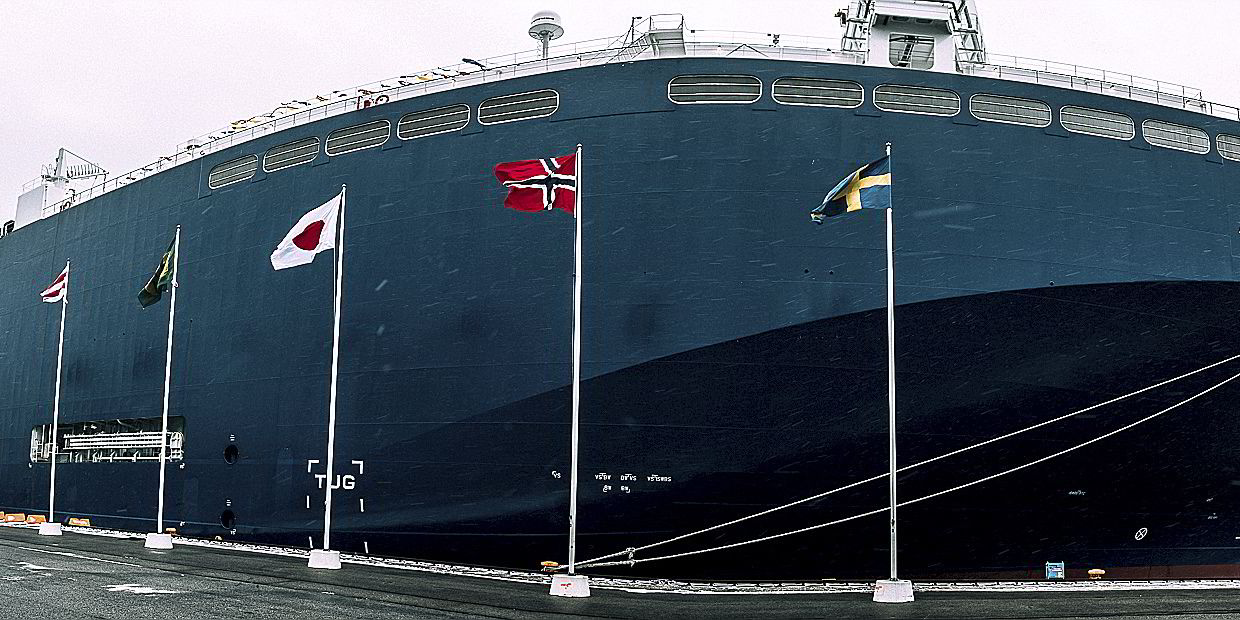Having taken delivery of the world's first dual-fuelled car carriers, United European Car Carriers (UECC) is looking forward to an eco-friendly future with lower greenhouse gas emissions.
“We don’t want to comply with today’s rules, we want to exceed today’s rules,” says Glenn Edvardsen, chief executive of the Norwegian carrier, which recently ordered two 3,600-ceu hybrid car/truck carriers with batteries.
“Compliance is not good enough for us,” he says of UECC’s strategy of ordering vessels with fuel tanks and engines capable of using LNG and green fuels of the future, such as biogas and synthetic oils.
Firm pair plus options
Shortsea ro-ro operator UECC, which is owned by NYK Line and Wallenius Lines but headquartered in Oslo, booked the pair earlier this year at Jiangnan Shipyard in China, with options for two more.
Edvardsen says UECC, which throughout Europe operates up to 18 car carriers of 1,060 ceu to 4,750 ceu — including seven owned vessels — is focused on meeting the IMO’s CO2 emissions targets involving a reduction of 40% by 2030 and 50% by 2050.
LNG alone will not achieve this, even though it can cut CO2 emissions by about 23%. But classification society DNV GL says UECC can reach the 2030 target once average speed reductions and the use of batteries are factored in, having optimised vessel design to improve fuel efficiency.
Engines for the latest UECC newbuildings are being built to the Tier III standard, even though, at the time of keel laying, they do not have to comply with the IMO’s Baltic Sea and North Sea emission control areas regulation on NOx.
Edvardsen, who has been with UECC for nearly seven years after earlier working in the cruise industry with NYK Line’s Crystal Cruises, says the intention is to operate the newbuildings mainly using LNG, including the auxiliary engines while in port.
Future fuel mix
Carbon-neutral and synthetic fuels are envisaged as part of the company’s future mix, something only made possible by opting for dual-fuel vessels at this stage.
The batteries will be employed when also required at sea for peak energy saving, reducing the number of auxiliary engines and thereby emissions. In port, the batteries can run the bow thrusters.
The LNG tanks should only need bunkering every two to three weeks depending on speed.
UECC is already operating two Chinese-built, 4,000-ceu pure car/truck carriers (PCTCs) — the Auto Energy (built 2017) and Auto Eco (built 2016) — billed as the world’s first and largest of their kind using LNG as a fuel. Edvardsen earlier described them as a triumph of engineering and international cooperation.
Those dual-fuel vessels are bunkered with LNG under contract in Zeebrugge, Belgium, at the same time as loading and discharge operations continue. A bunkering vessel that can trade between various ports is used.
The ships, the largest 1A super Finnish/Swedish ice-classed PCTCs in the world, can also operate on heavy fuel oil and marine gasoil. They can complete a 14-day Baltic round voyage using only LNG for main engine and auxiliary power generation.
Green profile
Unlike Siem Car Carriers, Edvardsen says UECC is not building dual-fuel ships to meet a customer’s requirements but because “we knew there was enough interest out there to use LNG and have a more green profile”.

He says the extra cost of building LNG-powered ships has been falling. Tier III compliance comes at a cost, when building vessels with an intention to trade in the Baltic and North Sea post-2021. But to operate in that area without LNG and instead burn high-sulphur fuel oil involves investment in scrubbers.
Edvardsen says releasing carbon into the sea instead of the air via open-loop scrubbers is not sustainable. He questions how the CO2 targets can be achieved when scrubbers increase fuel consumption by 4% and, with it, potentially emissions.
“We don’t have scrubbers on our ships and won’t have,” he says.





